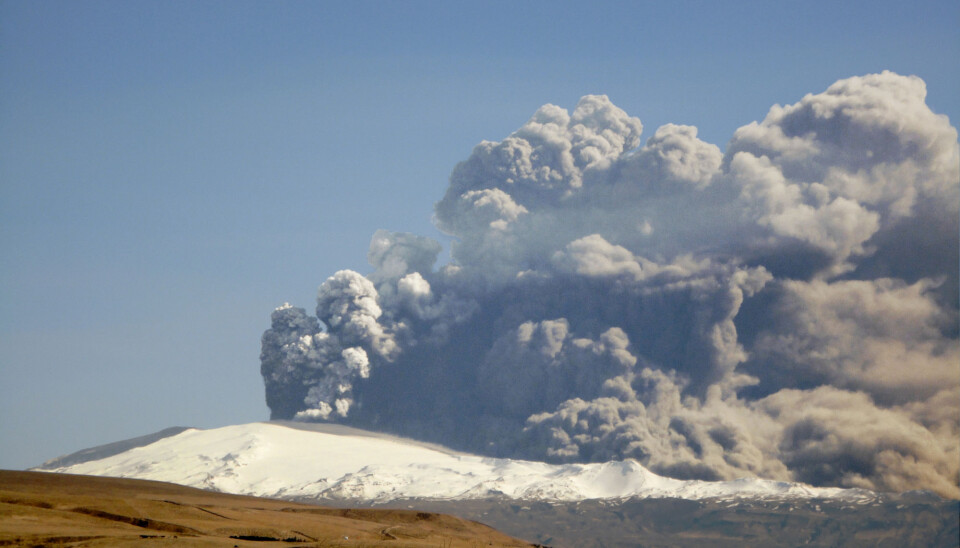
Air-traffic shutdown justified
Last year’s closing of flight zones due to the eruption of Icelandic volcano Eyjafjallajökull was justified, considering the potential damage from the ash, a new study concludes.
The volcanic eruption in Iceland in April 2010 sent massive ash clouds surging toward Europe, causing the largest air-traffic shutdown since World War 2.
This caused a financial disaster for several airlines and many of them criticised the closure, arguing it was unnecessary. But a new Icelandic/Danish study provides strong support in favour of the tough call that aviation officials made when they shut down large areas of the European airspace.
Too risky to fly
The researchers found that the ash particles were coarse and had sharp edges. This could result in sandblasted windows and could have had fatal consequences:
“The chemical composition and crystallisation of the ash was such that had it entered a jet engine it would have melted and then hardened again in the colder part of the engine, possibly stopping the engines," says Sigurður Reynir Gíslason, of the Institute of Earth Sciences the University of Iceland.
We decided to collect a row of samples through the smoke cloud. Luckily, we managed to get some amazing samples.
His team also discovered that the ash particles that caused the most disturbances to air-traffic were unusually small. “More than 60 percent of the particles were less than 60 micrometres in diameter. Such particles can be suspended in the atmosphere for days before they fall to the ground."
That leads them to the conclusion that the closing of fly zones was justified in light of potential harm from the ash.
Field research in the smoke clouds
At the start of the eruption Gíslason and his colleage, doctoral candidate Helgi Alfreðsson, went to Eyjafjallajökull to collect samples:
“I saw that this was a unique opportunity to get dry ash samples. Ash-particles are usually covered with a wafer-thin layer of salt that is dissolved as soon as the ash comes into contact with water. We decided to collect a row of samples through the smoke cloud. Luckily, we managed to get some pretty amazing samples.”
Microscopic analysis
Susan Stipp, Gíslason‘s friend and professor at the University of Copenhagen’s Chemistry Department, got in touch with him a few days later requesting samples of the ash.
“Stipp’s team opened up a new dimension for us. They could analyse the chemical composition of the particles down to the most microscopic scale – one millionth of a millimetre,” says Gíslason.
More to come
Further research on the Eyjafjallajökull ash is underway, including research on the chemicals released from the surface layer of salt on the ash particles in the hours after the ash comes into contact with water.
Experts from the Institute of Earth Sciences and the Icelandic Met Station’s Hydrology Department are also co-authoring scientific articles on substances carried to sea in the glacier bursts connected to the eruption. “We are also writing an article on the pollution in surface water in the vicinity of Eyjafjallajökull when rain first fell on the ash,” explains Gíslason.
The results of the ash research, published in the Journal of the American Academy of Sciences (PNAS), have received widespread attention: “With this article we reached a readership outside of geo-chemical circles, and scientists have already started getting in touch looking for possible project partnerships,” says Gíslason.
Scientific links
- Characterization of Eyjafjallajökull volcanic ash particles and a protocol for rapid risk assessment




